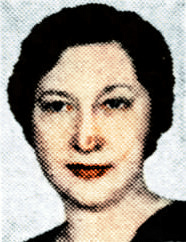
Ferguson: Adolescent husbands
By Mrs. Walter Ferguson
In love, as in war, the innocent suffer with the guilty. Right now, great grief is endured by women whose husbands, touched in the head by current hysteria, are behaving like adolescents. Day after day letters come to this column reciting the same story. A wife, married sometimes 10, sometimes 15 and occasionally 20 years, the mother of several children, is crushed by the sudden demand of her husband for a divorce. The reason for his behavior is always the same – there’s another woman, usually a younger, prettier one.
What can a wife do in such a heartbreaking situation?
First, I think, she must realize that men have been catapulted into a period when pretty girls swarm about them like bees around honey. Their workaday world has literally been taken over by women. The few males left in offices, stores and factories are exposed to the most violent temptations. They are smothered in femininity.
In nine cases out of 10, the wife, with the instincts of a wounded animal crawling off to die, makes the mistake of her life by agreeing. She should resist with every ounce of her strength. She should hold her home forty against the invading enemy until she drops in her tracks. For this much is true – the other woman doesn’t wasn’t her man half as much as she wants her position as his wife. He is merely the means of acquiring something dear to most of us – the status of the married woman.
It is her place as mistress of a home that the neglected wife must defend. If the marriage has gone on long enough, she is a real partner is the domestic firm. The children must also be considered, let’s leave love and pride out of it. From a strictly business angle, a wife should not give up her position or her possessions merely because her husband thinks he’s in love with another woman. Given a little time, he usually changes his mind about that, too.

